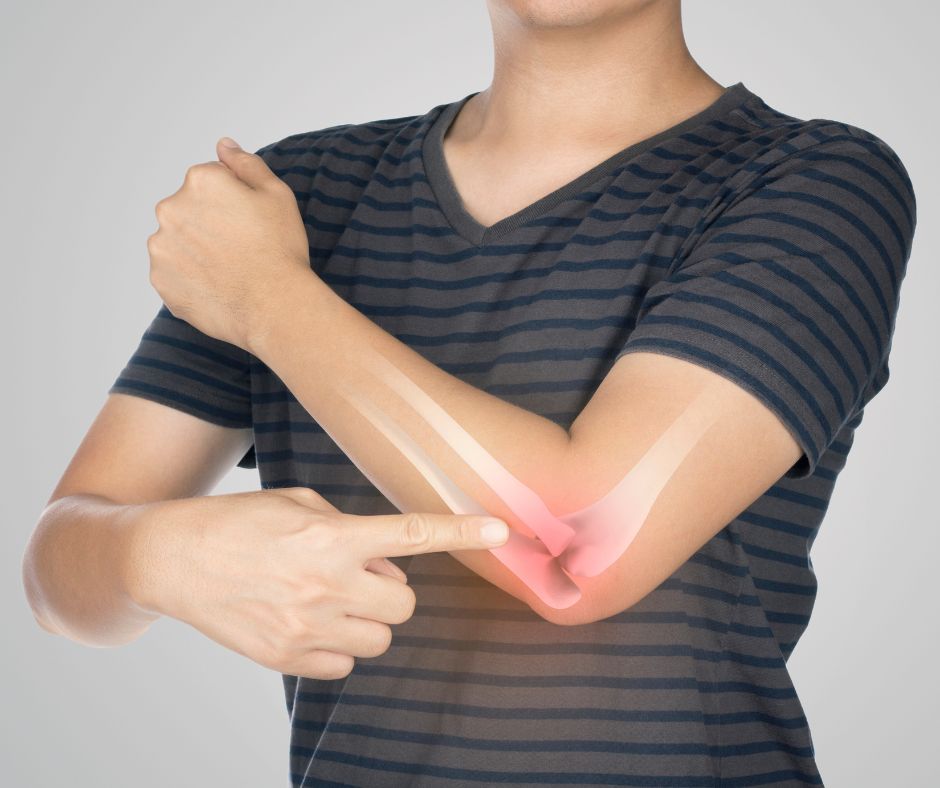Tennis Elbow: Not Just for Tennis Players
30Dec
What is Tennis Elbow?
Tennis Elbow is a condition that causes pain on the outer side of your elbow. It happens when the tendons in your elbow get overworked from repeated movements or strain.

What causes Tennis Elbow?
The primary cause is repetitive motions that strain the forearm muscles and tendons. Common triggers include:
- Playing racquet sports (e.g., tennis or badminton).
- Manual work such as carpentry, painting, or plumbing.
- Prolonged use of a computer mouse or keyboard.
- Cooking for prolonged duration daily.
- Prolonged use of accelerators of bike.
What is the incidence of Tennis Elbow in India?
Tennis Elbow affects approximately 1-3% of the population in India, predominantly in individuals between 30 to 50 years of age.
Who is more prone to Tennis Elbow?
Higher risk groups include:
- Athletes involved in racquet sports or repetitive arm activities.
- Workers performing manual labor, such as painters, plumbers, and carpenters.
- Office workers engaged in repetitive tasks like typing or riding bikes for long duration.
- Those who have to cook for longer durations.
Does diabetes, uric acid, and arthritis increase the risk of Tennis Elbow?
Yes,
- Diabetes: Chronic sugar weakens tendons, increasing susceptibility to strain and injury.
- High Uric Acid Levels (Gout): Can cause localized inflammation near tendons, predisposing to tendon injuries.
- Arthritis: Inflammatory conditions like rheumatoid arthritis weaken tendons and joints, making them prone to overuse injuries.
How is Tennis Elbow diagnosed?
Diagnosis typically involves:
- Clinical Examination: The physician assesses pain and tenderness by pressing on the lateral epicondyle and testing forearm movements.(Cozen Test: Stretch your arm straight, make a fist, and try to lift your wrist upward against resistance. If it causes pain on the outer elbow, it may indicate Tennis Elbow)
- Imaging Studies:
- X-ray: To exclude bone-related issues.
- Ultrasound (USG): To identify tendon tears or degeneration.
- MRI: For detailed imaging in chronic or severe cases. (Rarely Needed)

What are the treatment options for Tennis Elbow?
- Conservative Management:
- Rest and activity modification.
- Oral nonsteroidal anti-inflammatory drugs (NSAIDs).
- Muco-polysaccharides, Collagen Type I and Vitamin C may be added for faster healing
- Physiotherapy:
- Stretching and strengthening exercises.
- Techniques to improve forearm flexibility and tendon healing.
- UST , LASER modalities may be used for faster healing
- Orthotic Support:
- Use of a Tennis Elbow Belt ( like https://amzn.to/3ZQKUkm) (counterforce brace) it reduces strain on the affected tendon by redistributing pressure, providing pain relief during activities. It supports healing while allowing movement, making it an effective treatment aid.
What is the role of physiotherapy in managing Tennis Elbow?
Physiotherapy is crucial for:
- Strengthening forearm muscles.
- Enhancing flexibility and range of motion.
- Reducing pain and preventing recurrence.
What is the role of injections in treatment?
- Corticosteroid Injections: Effective for short-term pain relief by reducing inflammation.
- Platelet-Rich Plasma (PRP) Therapy: Promotes tendon healing through growth factors in your own blood. Here your own blood is taken and prepared to be given in elbow.
- USG-Guided Injections: Ensure precise delivery of medication to the affected area for better outcomes.
When is surgery required for Tennis Elbow?
Surgery is considered in cases where:
- There is significant tendon damage or chronic pain.
- You are an active sportsperson
Types of Surgery:
- Removal of damaged tendon tissue.
- Tendon repair or reattachment.
Note: Early diagnosis and treatment are essential to prevent complications and ensure a quicker recovery. Consult a healthcare professional if symptoms persist.
Comments